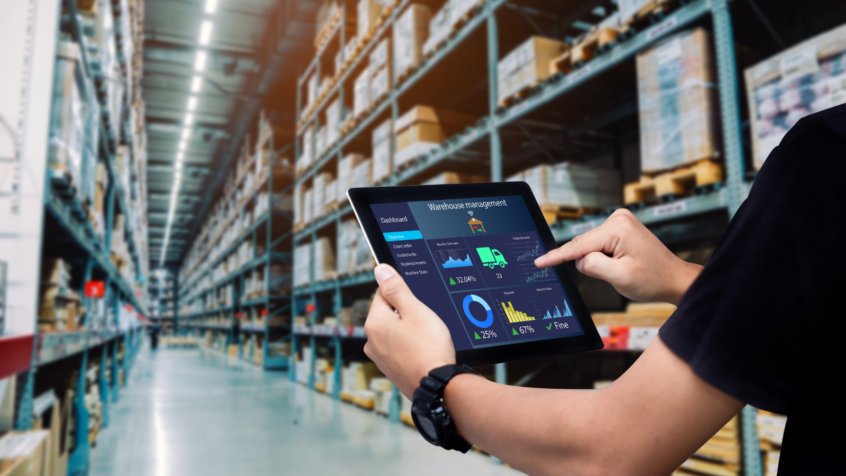In the intricate world of supply chains, logistics centers are the hidden gears that keep the machinery running smoothly. Often overlooked by consumers, these distribution centers play a crucial role in bridging the gap between manufacturers and the market. In this article, we will delve into the significance of logistics centers in modern business operations and how they contribute to effective supply chain management.
Picture a scenario where products move directly from the manufacturer to the consumer without any intermediary. The resulting chaos and inefficiency underscore the indispensable nature of logistics centers. These centers act as vital intermediaries, forming the backbone of the supply chain and ensuring that products reach consumers’ hands efficiently.
At the core of every logistics center is its ability to ensure smooth and timely deliveries. In a fast-paced world, customers have come to expect quick shipments. Logistics centers play a pivotal role in meeting these expectations by optimizing order processing, reducing delivery times, and accommodating changes in demand. Flexibility is a crucial element, enabling these centers to adapt promptly to market shifts and customer needs.
Benefits of Logistics Centers
- Flexibility: Logistics centers must be able to adapt quickly to changing circumstances. This includes changes in demand, market conditions, and technology.
- Resource management: Logistics centers must make efficient use of their resources, including staff, equipment, and space.
- Safety and reliability: Logistics centers must handle valuable merchandise carefully and reliably. They must also comply with all applicable safety regulations.
- Profitability: Logistics centers must be profitable in order to survive and grow. They must offer competitive prices and services while maintaining high standards of quality.
Types of Logistics Centers
Transfer Center: Functioning as a sorting hub, its primary objective is to categorize goods swiftly and direct them to their subsequent destination. Storage is not part of its operations, positioning it as an intermediary between points A and B. Upon receiving goods, their source and intended location are promptly determined, leading to immediate shipment. The essence of speed and collaboration is crucial within these logistical centers.
Distribution Center: Its core purpose is to house and oversee inventory, organizing goods by various criteria like geographical region or product type. Following this classification, the goods are dispatched to retail outlets or end consumers. This archetype represents the conventional logistics center and is equipped with essential technology to facilitate tasks such as shipping, item selection, information processing including packaging and distribution, and the application of labeling.
Processing and Distribution Center: This type could be likened to a distribution center but with enhancements. A notable instance is their utilization in processing and distributing items like meat, fish, and even the assembly and installation of components. Given their proximity to factories, these centers need to be in close vicinity for swift integration of final touches before products or components are finalized. While they significantly increase added value, they require facilities that are dust-resistant, slip and impact-proof, and include controlled temperature environments.
Fulfillment Centers: The surge in online sales via the internet has brought about transformative changes in logistics. Consequently, fulfillment centers have emerged as critical players. These hubs are dedicated to the management, collection, and delivery of e-commerce goods. Upon receiving the end consumer’s order, these centers automatically initiate the shipment process. This encompasses a comprehensive array of activities, ranging from inventory management, complaint resolution, payment processing, returns handling, and the maintenance of customer data.
These are some essential elements that every logistics center must have: Logistics centers are equipped with essential components to support their operations. Robust industrial flooring, such as polished concrete, provides a sturdy base for handling heavy loads. Industrial racking optimizes storage, while loading docks and safety measures ensure secure handling. Pallets, signage, and other tools complete the toolkit of a functional logistics center.
E-Commerce Transformation
E-commerce offers a fundamental advantage, the elimination of the need for expensive physical retail spaces and storefronts, enabling continuous sales opportunities around the clock. However, the absence of a traditional brick-and-mortar store necessitates a strategic approach for efficient inventory storage and prompt order fulfillment.
In the realm of e-commerce, logistics centers assume a pivotal role due to their influence on inventory storage, order delivery timelines, and the spectrum of shipping choices available to customers.
Contrastingly, adopting a strategy of storing inventory in multiple locations across the US or in a centrally positioned site, such as Chicago, can result in faster customer reach, shortened transit durations, and reduced shipping expenses. It’s crucial to distinguish between a conventional warehouse and a logistics center that offers comprehensive fulfillment solutions. Logistics centers operated by third-party logistics (3PL) companies extend beyond mere warehousing. They actively contribute to optimizing the supply chain for e-commerce businesses.
Furthermore, logistics centers operated by 3PLs provide more than infrastructure; they deliver dedicated support, advanced technology, data analytics, and adherence to best practices. This comprehensive approach not only saves businesses time and money but also contributes to their long-term success in the dynamic landscape of e-commerce.
Selecting the Right Partner
For businesses entering e-commerce or aiming to streamline their supply chains, partnering with the right logistics center is crucial. A 3PL-operated logistics center offers more than just storage; it provides comprehensive supply chain solutions. From inbound logistics to automated shipping, these centers offer end-to-end services. Their expertise ensures orders are efficiently packed, and returns are managed smoothly. Additionally, these centers provide dedicated support, advanced technology, data analysis, and best practices, ultimately saving time and costs.
For businesses seeking to navigate the challenges of the digital age and deliver exceptional customer experiences, partnering with a progressive logistics center like GLC Distribution is a strategic move. With our advanced facilities, strategic positioning, and unwavering commitment to excellence, at GLC Distribution we provide a comprehensive solution to your logistics requirements.

